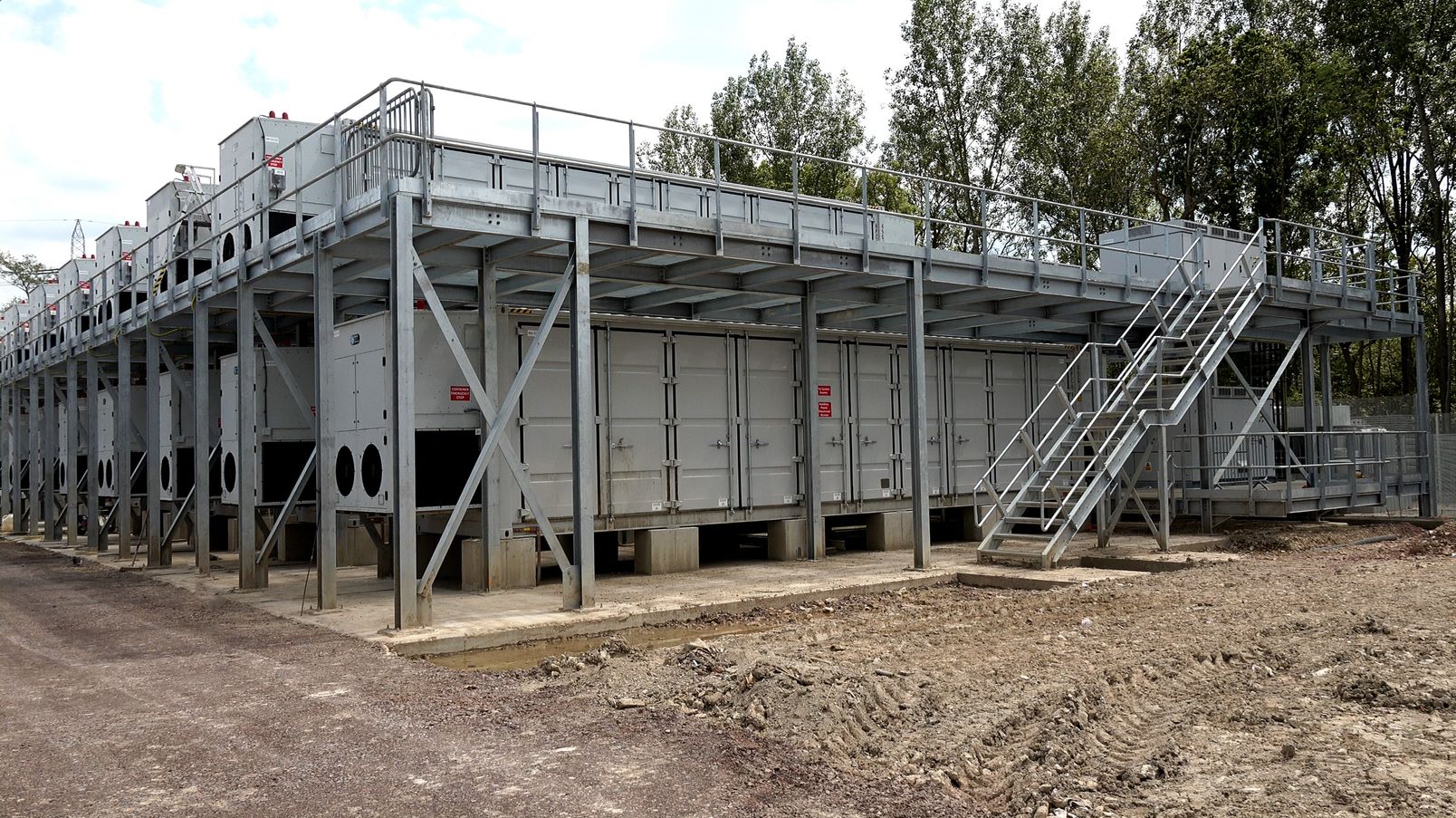
A 50MW lithium-ion battery energy storage system which will form part of a transmission system-connected ‘Energy Superhub’ has been commissioned in Oxford, England, while another 100MW transmission-connected battery project in the country has reached financial close and is set to begin construction.
Investor / developer Pivot Power, technology provider Wärtsilä and system optimiser Habitat Energy activated what the trio claimed to be the UK’s first grid-scale battery storage system directly connected to the transmission network yesterday.
Enjoy 12 months of exclusive analysis
- Regular insight and analysis of the industry’s biggest developments
- In-depth interviews with the industry’s leading figures
- Annual digital subscription to the PV Tech Power journal
- Discounts on Solar Media’s portfolio of events, in-person and virtual
The 50MW lithium-ion battery is part of the world’s largest hybrid battery, with this combining lithium-ion and vanadium redox flow systems. Provided by Invinity Energy Systems, the vanadium redox flow system is due to be fully operational later in 2021.
The energy storage system is to provide flexibility to enable further integration of renewables, increase system resilience and future-proof the UK’s electricity network.
It is being developed alongide a private wire network which will share the connection with the high-voltage transmission network and deliver what EDF-owned Pivot said would be large volumes of power to public and commercial electric vehicle (EV) charging locations across Oxford.
Wärtsilä provided the battery energy storage technology, with this underpinned by its GEMS Digital Energy Platform. This can dynamically manage energy systems through a range of applications, providing feedback to stakeholders across asset owner, operating and trading value chains and enabling the delivery of services such as frequency regulation and enhanced grid resilience. Pivot signed a deal with Wärtsilä in early 2020 for the 50MW battery alongside a separate 50MW asset being developed in Kemsley, Kent,
Meanwhile, Habitat Energy will optimise the battery trading and revenue generation of the Oxford battery using its AI-enabled PowerIQ platform, with this combining the best opportunities available in the day ahead market, intraday and Balancing Mechanism and providing ancillary services such as Dynamic Containment.
The battery forms part of the £41 million (US$57.1 million) government-backed Energy Superhub Oxford project, which is aiming to integrate energy storage, EV charging, low carbon heating and smart energy management technologies to decarbonise Oxford by 2040. Pivot Power is aiming for up to 40 similar sites across the country, with this to total up to 2GW of battery storage.
Last year, Pivot Power CEO Matt Allen and Wärtsilä Energy’s general manager for data science Luke Witmer took part in a sponsored webinar with Energy-Storage.news on how energy storage is being used to support the uptake of electric transport last week, largely focusing on the pair’s work at the Energy Superhub project, called ‘When energy storage meets electric vehicles: Solving critical infrastructure challenges,’ which you can watch here.
Zenobe to begin construction on 100MW/107MWh battery project following Santander financing
Battery storage firm Zenobe has announced it is to start construction on its 100MW/107MWh battery storage project at Capenhurst, near Chester in north-west England.
This follows Santander UK providing new funding, taking the total the subsidiary of Spanish banking group Santander has provided Zenobe – in the form of a non-recourse debt facility – to over £60 million.
The battery energy storage system (BESS) is to be Europe’s biggest and cost tens of millions of pounds, according to Zenobe, as well as being the first to absorb reactive power directly from the transmission grid. Expected to be completed by April 2022, it has already been awarded a reactive power contract awarded by National Grid ESO to help deal with the increased volatility in the frequency and voltage of the network in the Mersey area. This, alongside having a long-term route to market agreement with EDF Trading, is helping to underpin the project finance package, which builds on a first-of-a-kind facility between Zenobe and Santander UK in 2019.
The funding also includes an uncommitted £30 million to support future growth aspirations and new projects developed by Zenobe. It follows the company raising £150 million from Infracapital, the infrastructure equity investment arm of M&G Plc, in 2020.
Nicholas Beatty, Co-Founder and Director, Zenobe, said: “The additional debt raised and committed will be crucial in allowing us to roll out this project and our future pipeline of battery energy storage projects across the UK.”
Zenobe currently has 75MW of operational grid-scale batteries, with these providing a range of services including balancing, Dynamic Containment and reactive power services in the UK.
In May, it announced it is developing Scotland’s first transmission-connected battery storage project, with the 50MW project in Wishaw, North Lanarkshire expected to be operational by the end of 2022. It is intended the battery will help to help ease grid constraints, stabilise the system and enable greater renewable energy growth.
These two stories originally appeared as separate items on Solar Power Portal.






